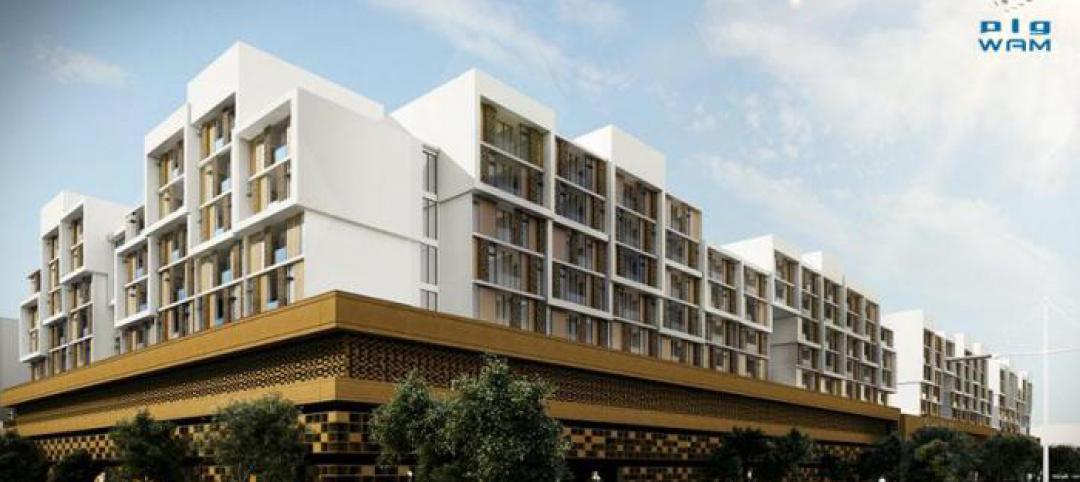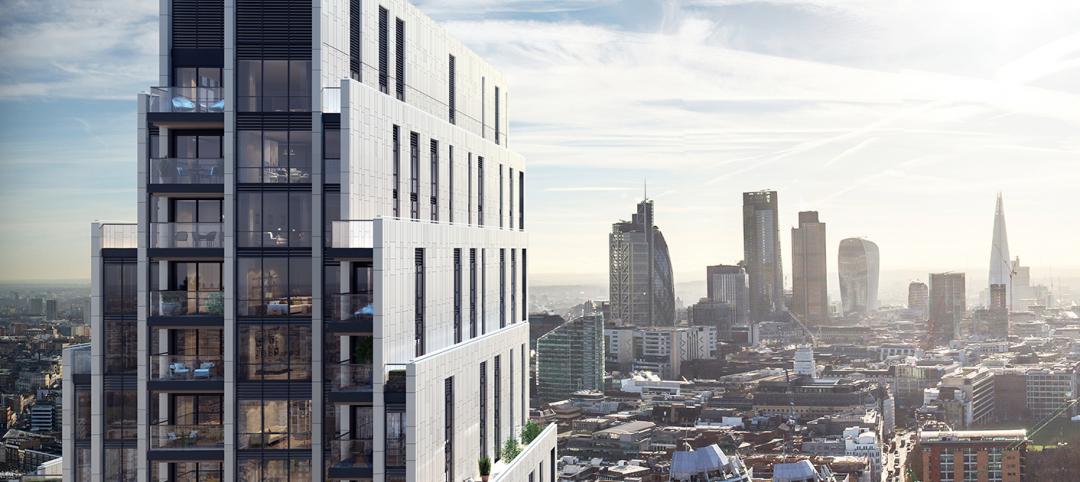LEARNING OBJECTIVES
After reading this article, you should be able to:
+ LIST 3 myths related to the use of video cameras in apartment and condominium communities.
+ DEFINE "choke points" and their application to the siting of video surveillance cameras.
+ DISCUSS several physical design factors that can impede the efficacy of video surveillance systems.
+ REVIEW the impact of intensity, uniformity, and color rendering in lighting and their effect on video cameras.
“Cameras can be part of a security program, but they’re not the security solution itself.” That’s the first thing to understand about video surveillance systems for apartment and condominium projects, according to veteran security consultant Michael Silva, CPP.
You need to establish your security needs and develop a comprehensive security plan in the early stages of design. “The questions that don’t get asked during the design phase are almost impossible to correct when the concrete’s being poured,” said Silva. (See our 2017 BDCuniversity AIA Course for guidance on creating a security plan.)
In most cases, you’ll want to hire a specialist to help you design your system. “It’s a professional skill,” said Silva, a Certified Protection Professional, considered the “gold standard” by ASIS International, the organization that certifies security professionals. “You wouldn’t want anyone but a structural engineer to tell you where to place your columns. Same idea for your video surveillance system.”
Some architectural and electrical engineering firms have security system specialists on staff, but if that’s not the case, said Silva, hire a reputable security consultant to help choose your video system and advise you on how to deploy it. (Best source for locating a qualified security consultant: International Association of Professional Security Consultants.)
In planning your system, you need to be aware of what Silva calls the “three dirty secrets” of video surveillance systems:
1. Video cameras rarely deter crime. Most petty criminals either know they’re being recorded or don’t care, because they know local police departments don’t have the manpower to investigate minor crimes.
2. Most recorded video is useless as evidence. The image quality is rarely good enough to present in court, said Silva, and it would be cost-prohibitive to have a system that, for example, covered every square foot of a parking garage just so a tenant could determine who backed into her car.
3. Even the most up-to-date “megapixel” security cameras won’t cure all your video surveillance problems. They can’t “see” through concrete columns, and they may not be focused at the right angle. (For more discussion of security cameras, see Silva's report, "Three Dirty Little Secrets about Video Surveillance Systems.")
In other words, despite what you see on “CSI” and “Law & Order,” video surveillance systems won’t completely prevent crime from happening on your property and won’t solve those crimes if they do happen. “Their primary purpose is to tell the story after the fact,” said Silva, so that the property manager can tell when and where an incident may have occurred and who may have been involved in it. Silva said he does encourage leasing offices and building managers to have a live video on display at all times, so that suspicious activity—“Who’s that person hanging around the loading dock?”—can be detected before something serious happens.
The most cost-effective route, said Silva, is to install cameras at “choke points”—critical intersections where cameras have the best chance of capturing a good image, such as the parking garage gate, the elevator lobby, and stairway entrances.
When you get to the point of actually specifying products, your security consultant should be able to give you a list of several reputable manufacturers to choose from. Silva recommends specifying security-grade cameras that work well on dark nights and in light fog (no video camera works well in dense fog, he noted) and that counteract headlight glare and lighting hot spots.
Don’t forget to check out the manufacturer’s support services. “If you get some product from outside the U.S., they may have only one domestic office for support, and it could be miles away,” Silva warned.
For a well-designed system you should budget about $2,000 per camera, including cabling, conduit, recording equipment, and installation, and negotiate downward with your supplier from that point, said Silva. But be aware that image quality can vary greatly even for the new megapixel cameras. “Cameras with a higher megapixel rating don’t necessarily produce better quality images than cameras with a lower megapixel rating,” he warns.
GET THE SECURITY LIGHTING RIGHT TO MAXIMIZE surveillance cameras IN APARTMENTS
Your video surveillance system won’t be effective if the intensity (the brightness of the light), uniformity (the consistency of the light level from place to place throughout the lighted area), and color rendering (how accurately the lighting renders colors) of the lighting aren’t right. This is especially true for outdoor lighting and lighting in parking garages.
Uniformity is the ratio of the maximum lighting level to the miminal lighting level in a specified area. Silva recommends a maximum uniformity ratio of 3:1 for most outdoor parking lot applications. If the uniformity ratio is too high, you’ll have “hot spots” (bright areas of glare) and “cool spots” (dark areas); in either case, the image quality will be poor.
In general, it’s better to have more lighting fixtures, more evenly spaced, than to rely on one or two high-powered luminaires. Silva further cautions against putting high-intensity lighting fixtures high up on your building and expecting them to “cover” the entire site; in most cases, the fixtures will not “spread” the light for optimal uniformity.
For courtyards, make sure you have adequate lighting along walkways. As they grow, trees and other plantings can block lighting, so be sure that landscaping is properly trimmed to prevent this.
For surface parking lots, Silva recommends an absolute minimum light level of one foot-candle throughout the entire area; 2–4 fc would be even better. Lighting in parking garages can be more difficult, given the many blockages from columns, elevator areas, etc.
Until recently, metal halide lamps were Silva’s preference for outdoor lighting; he said they’re still suitable for projects with smaller budgets. Now, however, Silva recommends LEDs. “They cost more than other systems, but they’re worth it,” he said.
He recommends LEDs that provide a white light spectrum, for more natural color rendition. “Architects will often specify colored lighting for aesthetic reasons, but for security purposes pure white light is best,” said Silva.
In siting the luminaires, minimize light intrusion into living spaces. You also want to use fixtures with shielding that guards against light pollution, especially if you’re going for LEED certification. |M|
For more from Michael Silva on lighting your parking lot for security, see lighting for security.
Related Stories
Codes and Standards | May 1, 2015
Colorado House kills construction defects bill
The legislation would have made it harder for condo owners to sue builders.
Multifamily Housing | May 1, 2015
Trade groups extend campaign to promote apartment living
The groups claim that there are more than 37 million Americans—12% of the population—living in just under 20 million apartment units nationwide. Apartments and their residents contribute $1.3 trillion annually to the economy.
Multifamily Housing | Apr 28, 2015
Masdar City: Construction on sustainable residential complex begins
The planned city’s new residences will help support Abu Dhabi’s rapid population growth.
Multifamily Housing | Apr 28, 2015
Mace and Make work on London's 40-story residential tower
The tower is one of six residential high-rises planned near London’s City Road, which is undergoing a mini construction boom.
Multifamily Housing | Apr 27, 2015
The empire strikes back: George Lucas proposes new affordable housing complex he'll finance alone
The latest plans are seen by some as payback for community opposition to his past real estate ventures.
Wood | Apr 26, 2015
Building wood towers: How high is up for timber structures?
The recent push for larger and taller wood structures may seem like an architectural fad. But Building Teams around the world are starting to use more large-scale structural wood systems.
Multifamily Housing | Apr 22, 2015
Condo developers covet churches for conversions
Former churches, many of which are sitting on prime urban real estate, are being converted into libraries, restaurants, and with greater frequency condominiums.
Green | Apr 22, 2015
AIA Committee on the Environment recognizes Top 10 Green Projects
Seattle's Bullitt Center and the University Center at The New School are among AIA's top 10 green buildings for 2015.
Multifamily Housing | Apr 16, 2015
3 award-winning affordable multifamily developments
San Francisco's Bayview Hill Gardens and the Broadway Affordable Housing complex in Santa Monica, Calif., are among the multifamily developments to be honored in AIA's 2015 Housing Awards.
Multifamily Housing | Apr 16, 2015
Seattle’s size restriction on micro apartments blamed for rise in rents
Seattle’s city planner recently said that the council’s new rules have made small apartments more expensive to build and charged the board with “overreaching” and not giving micro-housing “a fair shake.”

















